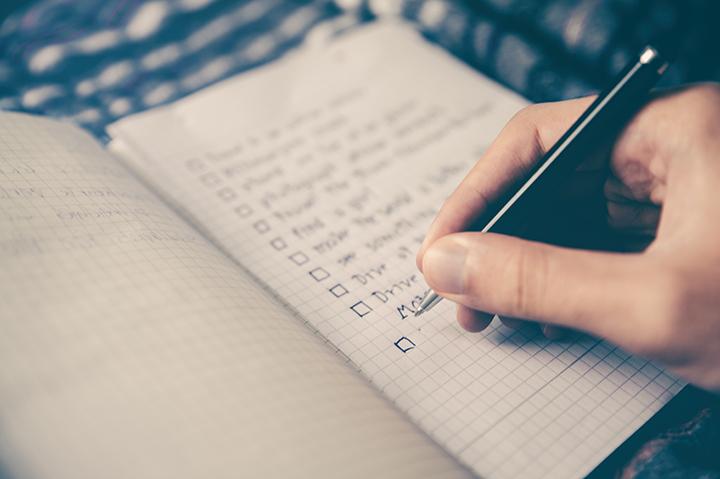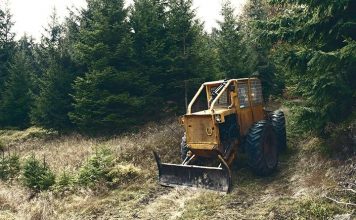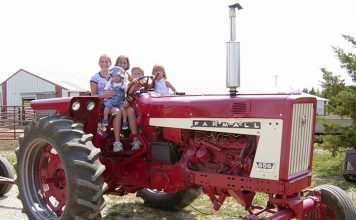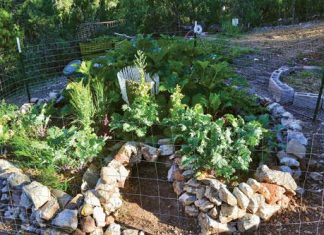 |
|
| Issue #55 • January/February, 1999 |
Today, many people are afraid that hard times are about to descend upon us because of the Y2K computer date problem, also known as the Millennium Bug. Others fear that the economic chaos occurring in Asia, parts of South America, and parts of Europe will engulf the United States, causing a Depression on the scale of the one that followed the 1929 stock market crash.
The scenario of a Y2K computer catastrophe, which self-styled experts say will begin January 1, 2000, goes like this: There will be general chaos and shutdowns of the computer-controlled delivery systems of American society. Grocery stores won’t get adequate food supplies, gas stations won’t get enough gas to pump, hospitals won’t get enough medicines, and government computers will fail to deliver social security, pension, welfare, and other government checks.
The computer-dependent banking industry will collapse, making it impossible for you to take your money out of the bank to buy food and other necessities. Planes that are allowed to fly will be be unsure of their altitude or bearing because the government software they use will have become flawed.
And the electrial grid will either collapse completely, or in huge sections, leaving millions of people without electricity to keep food cold, their homes warm, or the lights on.
People in the cities will panic. Not only might there be widespread rioting, but the panic may well spill over into the countryside, with hordes of people searching for a way out of the catastrophe. Lawlessness and violence will rule the resulting chaos, with gangs of desperate people doing what they feel they must to help their families survive.
The scenario is even bleaker in the event the world’s economic woes overtake the United States. Where the Y2K computer glitch is seen as causing severe hardship on a relatively temporary basis, an economic collapse is viewed as long-term. And it will be exacerbated because most people today live away from the land, unlike the 1930s when a significant portion of the population still understood how to grow their own food and otherwise fend for themselves.
|
|
|
To view this possible scenario, the experts say you have only to watch the evening television news and observe the woes of Russia where an entire nation has been cast into poverty. Or view the once mighty economic giant, Japan, whose stock market has declined 60%, or the formerly strong economies of Thailand, Indonesia, and South Korea, whose economies are down 70 to 90%. And lately South America has joined the casualty list. These countries are harbingers of what lies ahead for the United States, the doom and gloom experts say.
For many of these countries, families cannot pay their power and phone bills, food is in short supply, and other necessities needed to make life palatable have all but disappeared. Repossessions, and families being evicted from their homes, are common.
Sounds bad, doesn’t it? And it may or may not come true in this country. It happened before, the doom experts say, and it can happen again. And this time, they say, Americans are even less prepared than they were in the 1930s.
Whether it happens or not, or even if it only partly happens, there are steps you and I can take now to prepare for any eventuality. And it’s a whole lot better to be prepared for something that may never materialize than to not be prepared for something that may hit in the year 2000, or next month.
This article, I hope, will help you prepare for any eventuality, whether it’s the Y2K Bug, a major economic collapse, an earthquake or hurricane, or even a death in the family that brings on hard times for you personally. The steps outlined below will also insure a better quality of life if nothing every comes your way.
Finances first
While times are good, artificially or not, it’s time to work extra long hours and “kill the bills.” Just get out of debt. If you can’t see the way to pay off your $250,000 home, consider selling it and moving to a less expensive place. There are a lot of homes for under $50,000 available, in most locations, if you really look hard.
Consider fixer-uppers, longer commutes from a more rural setting. If your job is so-so, consider moving to a location that has cheaper housing and living expenses. Get your home debt free, as soon as you can. A homeless family is a refugee family. Never become a refugee! Can’t happen in this country? Think again. Check out the statistics for homeless people on the streets now. Sure some are addicted to drugs and alcohol, some too dysfunctional or lazy to “get a job.” But a lot are just plain hardworking people who have hit tough circumstances. Don’t put yourself in a position to become a refugee.
Pay off those credit cards, and put them in a top drawer. The interest is equal to that of “loan sharks” just a few years ago. A thousand dollar item can end up costing as much as three thousand, especially when you just pay the minimum each month, which is largely interest.
Get rid of all the “toys” you can: cable TV, the motor home you only use once a year, the vintage car in the garage, driven just to impress people, the new car in the garage (replace it with a good used one that you can quickly pay off), the extra vehicles you do not really need but are making monthly payments on. The vacation home could be replaced with one less expensive in a very rural location, to be used as a just-in-case retreat should urban or suburban life suddenly get too scary.
Sock away some hard cash. Yep, I sure know it’s awful hard, especially for we folk who are far from well-to-do. Even a few hundred dollars, especially if in coin or paper money turned to gold, could come in very handy. Don’t depend on banks. We use them, but would never, under the current economic climate, keep our savings in them. We would rather have real money where we can get it quickly…no matter what. FDIC insured? Yeah, right…when the country has more than a trillion in national debt…and no gold in sight? I don’t think so.
Prepare to live simply
Begin gearing up your household to run without electricity, which also probably runs your furnace and water well (or city water). In the Detroit suburbs, Dad had his own well.
Check out local regulations before drilling though, as in some areas, it is illegal. Personally, I would not livewhere there were such regulations, as it could be too dangerous should city water go out. A developed spring is an excellent source of dependable water, as you have water pressure without needing electricity.
A wood stove can be installed in most homes, in most locations, to provide emergency heat (and cooking). Other options include solar heat/cooking, which is legal most places, and propane, which will power a wall furnace or space heater, kitchen stove, lights, and refrigerator. A 500-gallon propane tank will last a long time when gas is used frugally. Beware of stoves with electric ignition or heaters that require fans to heat. No electricity = no heat. We’ve used a propane fridge for years, and like it much better than an electric one. You might consider switching before you need to.
Store up fuel
Store up fuel for heating/cooking before you need it. Wood and other fuel can be stored a long time, will be cheaper before there is a great demand, and it will be easier to get. We have at least 12 cords of dry firewood in the lot, and only burn about one a year. It’s nice to have…just in case. Likewise, a barrel of kerosene is good insurance against spending dark evenings. You won’t be able to buy it during hard times, but it’s pretty cheap now.
Have alternative lighting, whether it is kerosene lamps, Coleman lamps, or propane wall lamps. Being poor and in the dark is not a good emotional combination. And be sure to have replacement wicks, globes, and other parts….just in case. We had one drop of condensation fall on a burning Coleman lamp, popping the globe instantly….and had to do without the lamp for a month, until we could get out of our snowed-in cabin for a replacement. Now we have replacements for each lamp type.
Store up some gasoline, where local regulations allow. With life-extenders, a barrel of gas can last a long time without getting too “old” to burn well. This gasoline can be used to travel or to cut wood to keep warm.
Food storage
Have enough food stored up for at least a year, preferably two. This seems basic, but I know very few people, especially those with good jobs and “normal” incomes, who have a full pantry. With today’s disposable society, many people shop daily for what they will eat for the next day’s meals. The pantry (if they even have one) shelves are empty or filled with junk.
I have written two major articles for Backwoods Home Magazine for the last two issues (Issue Nos 53 and 54) about preparing your food pantry. Read them.
We keep two years’ food stored up, from wheat to home-canned foods, just in case. We know we could never turn away hungry refugees without feeding them a good meal, especially if they were our neighbors or marriedchildren. Could you?
|
|
|
Medical needs
Build up an extensive medical kit. We use a large field box, which has two levels and many compartments. Get as much medical training as you can, such as EMT classes, held locally. You might not want to become an EMT, but you can learn much that will help your family in an emergency. Buy a good book or two, such as the Red Cross First Aid manual and the Merck Manual. Then stock up that medical kit.
Remember that “normal” things, such as cold medicine, may not be readily available.
Both my husband, a CNA, and I, a veterinary field technician, have extensive medical experience, so we include in our medical kit sutures and suture needles, injectable local anesthetic, an IV and IV electrolytes, epinephyrine for shock due to allergies or drug reaction, a blood pressure cuff and stethoscope, plaster casting material, and more. One never knows if, and when, a doctor will be available during bad times. Of course, if a doctor is available, one should never attempt to treat their own or others’ injuries or illnesses.
Other high priorities
A radio and batteries are other must-haves. This keeps you in contact with what’s going on in the world. There are several brands of solar powered radios on the market today for not a lot of money. Batteries must be replaced or recharged. We also have a weather radio to keep up on weather conditions which can affect one’s life much more when times are tough. Listening to this 9-volt radio each morning keeps us in tune to Mother Nature.
Does your family have adequate warm, sturdy clothing? If not, this is a high priority. Buy good hiking boots, jeans, and clothing that is practical, long-lasting, and warm. If you never need ’em, they won’t take up much space in a closet. If you do, they will become essential.
How about alternate transportation…not your car or pickup? Walking is fine, but doesn’t cover many miles in a day.
Some alternatives are bicycles, ATVs, motorcycles, snowmobiles (in snow country), and horses. All take much less gas to run than a car or truck, and bicycles and horses take none at all. Remember you don’t have to use a car or truck, even though you are used to it. The Amish and other plain people have always used horses and other non-motorized vehicles for travel, and in Europe and many other countries bicycles are the norm for a lot of folks.
|
|
|
Stay-at-home emergencies
Some emergencies, such as severe ice storms, power outages, and blizzards, occur every year or so in many cold-climate areas, more frequently in other areas. This past year El Nino has contributed to widespread flooding in areas unused to flooding, and to major storms in areas unused to major storms. All these things created emergencies that largely demand people stay where they are out of common sense.
Remember, without power, you will not have access to stores for food and supplies, banks and ATMs for cash, a flush toilet, drinking water out of the tap, your furnace fan (or heat at all, if you have a “modern” all electric home), the electric kitchen stove, gas for your car, and many other “normal” conveniences you are used to.
The food in your refrigerator will slowly spoil and the food in your freezer will slowly thaw, then rot.
Luckily, there’s a lot you can do to keep on top of such a situation. Number one, begin a game plan of not depending on electricity. Power is fine. It’s handy, convenient, and easy. Just don’t depend on it.
Getting along comfortably without electricity
Trade in your electric stove for a gas range that does not have electric ignition. It will work when there is no electricity. Better yet, buy a wood range for the kitchen or basement. Trade in your electric refrigerator for a gas unit. Not only will it run without power, but it keeps food much better and lasts for many more years. Have at least a back-up heating unit that does not depend on electricity to run or to power the fan. A wood stove, a propane or natural gas wall furnace, or a space heater are all more dependable than a central furnace requiring electricity to provide heat for the home.
Sanitary concerns
Build an outhouse. What? Yep, even if you live in the city, discreetly dig a hole and build a “garden shed” over it. UmHmm, I know it’s not “legal” in many localities, but in an emergency, you can use it and keep your home much more sanitary and sweet smelling. No emergency? Use it for a garden shed. Remember too that urine is normally sterile and can be diluted with water and poured around trees as nitrogen-rich fertilizer. If it is totally impossible to construct an outhouse, keep urine separate and dispose of discreetly. Solids may be buried daily or you can even use a “kitty litter” box, keeping them covered after each use. Toilet paper may be bagged and burned or kept for later dumping.
Alternative lighting
Decide on what emergency lighting you will use. A lot of folks prefer to buy a generator to power their entire home during a short to moderate power outage. We prefer not to have to depend on generators running 24 hours a day; we use one for an hour or so and then only as truly needed. Remember, gasoline or diesel fuel may be exceedingly hard to get. Don’t waste it for luxury.
We have used propane wall lamps, which give good light and are cheap to run; Coleman lamps, which also give good light, but must be pumped up to pressure from time to time; and kerosene lamps. Candles can do once in a while, in a pinch, but are easily upset, and are dangerous to use.
Be sure you have a good supply of matches, as you’ll need more than you think. A few butane lighters also come in handy. I also keep a flint, steel, and magnesium fire starter, just in case. The magnesium burns very hot so it will light a fire, whether your fuel is wet or dry. You can buy them at the Preparedness Expos all around the country.

Survival doesn’t have to mean stark times of doing without |
Food and drink
Have enough food and emergency water stored up if you don’t have an alternative water supply, such as a well with hand pump, spring, or cistern. Never drink any surface water, such as from a lake or stream, that is not either filtered with a good filter to remove contaminants such as giardia, which causes terrific diarrhea, or boiled for five minutes after straining off the major silt. You can treat questionable water with iodine, in drop or tablet form, but personally, I think the taste is awful. I prefer boiling, cooling, then shaking the water container vigorously to re-oxygenate it, which dramatically improves the taste. Never drink any water from a lake or stream in or downstream from agricultural land (leaching nitrates from fertilizer) or factories/mines (heavy metals, toxic wastes), as these may escape all but the most expensive filters. Boiling will not make the water drinkable.
You can obtain water for washing and flushing the toilet from several sources: melting snow, ditches, ponds, livestock tanks, rivers, and other surface water. These will all do the job. When your water goes into an urban sewer, be sure you can “dump flush” the toilet, however, as some systems depend on pumps (electricity) to move the sewage. Check it out before you need to.
Vehicle emergencies
A lot of our day-to-day emergencies involve being stranded with our vehicle. A mechanical failure, a flat tire, being stuck in the snow, stuck in the mud and so on can make life miserable. We need to make it less miserable—and not life-threatening as it can sometimes be.
Vehicular emergencies are compounded by other emergencies. If you are stranded in a blizzard, possibly because of an evacuation or civil disturbance, it can quickly lead to a life-threatening situation. You should prepare for these situations also.
|
|
|
It may seem basic, but always know where you are, and know the best route to take to get to where you are going. Carry and use a map.
In cities, avoid “bad” neighborhoods, even if it requires going out of your way.
Pay attention to weather conditions when you drive, and prepare accordingly. It’s shocking to us to see folks in cars during cold, unpredictable winter weather, dressed in shorts and sandals. That’s playing Russian roulette. Wear warm clothes during cold weather, or at least have them with you, including warm socks and boots.
Even in summer take some warm clothes along with you. Some evenings get downright cold in many areas, especially when there is a drizzly rain pouring all night.
If the weather is really bad, don’t drive. Seems logical, but a lot of unprepared folks set out into the teeth of a blizzard or hurricane because nothing is going to disturb their plans. Waiting a day or two is a lot safer. Listen to a weather radio or current weather forecast before setting out. Even a four wheel drive can run into icy roads or drifted snow and have trouble.
If you do get stuck or stranded by a mechanical failure in bad weather, stay with the vehicle. A lot of folks lose their lives by trying to hike for help. In a vehicle, there is absence of wind, making comfortable survival much more certain. Your candle can heat the inside, warn other motorists of your presence, and attract the attention of rescuers. But be careful! Everything inside a vehicle burns with toxic smoke and ignites easily. Keep a down-wind window cracked to prevent carbon monoxide poisoning, especially if you run the vehicle (with the tailpipe in the clear) from time to time, to keep warm.
A plan, truck, survival pack for short-term evacuation
There are many situations where you may be suddenly called upon to evacuate your home: forest fire, hurricane, earthquake, chemical spills by truck or train, flood, or even radical emergencies such as terrorist activity or riots. To prevent panic, be prepared, much before anything of the sort happens.
We also have our favorite photo albums, important papers, and keepsakes localized for instant grabbing.
Have a “plan of action” worked out, discussed with all family members. Where you will meet? Who will carry what, and where you will go—a relative’s house, a campsight on state or federal land?
If you always keep on top of the weather, the news, and local conditions, you will have a jump-start on evacuation, allowing you to prepare beforehand and avoid panic.
Remember, no personal goods are worth the life of a family member. If an intense hurricane or forest fire is headed your way, make ready to leave. Wet the roofs, batten the windows, do whatever you can do. But when it’s time to evacuate, get out before the roads jam with traffic.
Have the car/truck fully gassed up and carry some reserve gas in cans….just in case. Carry not only your “grab and get” supplies, but be sure you have maps and your vehicle emergency equipment, as well. Try to stay out of main traffic areas/jams and stay out of dangerous areas, i.e., near the path of a fire, the chemical spill, the riot, etc.
It’s a good idea if every member of the family has his/her own survival pack. Even a cheap backpack containing warm clothing, food, water, a lighter, candle, first aid supplies, etc. will provide extra security if family members become separated or if someone forgets something.
A survival retreat for long-term evacuation
All families today should have a safe place they can evacuate to should things get dangerous in their home area. This is especially true for city-dwelling people. Such possible realistic scenarios as riots, often due to poverty, hunger, and anger at situations that seem to have no resolution; terrorist activity, which even the government fears is on the imminent increase in the U.S.; missile destruction of areas, which will become more possible as desperate Russians sell missile technology to terrorists; and severe economic depression or collapse, which, considering the current global economic mess, may be the most likely scenario of all.
|
|
|
This retreat can be called a summer home, a vacation home, hunting cabin, or whatever. Calling it a survival retreat immediately brands you as a nut-case radical. Just quietly go about your business, not making waves or attracting attention, and secure your hideaway.
This safe spot should be located at least an hour’s drive from a city—two hours from a large urban area such as an L.A. or Chicago-type metropolis. A rural location is great, but a more remote place is even better. Some folks freak out at this, preferring a small rural town setting. That’ll work, too, as a close small community can work together. But we’ve found that that is not always the case, and we prefer to keep to the boonies.
You want something with a little acreage in case you must raise all of your food. Some people claim you can raise all your family’s food on a small 50 x 50-foot garden. Nope, you can not! When you must can all winter’s food, raise all of your small grain and corn, and grow feed for any livestock you have (chickens, rabbits, etc)—and take into consideration weeds, drought, and predation—you will need more land, at least two acres to feed your family well.
Forget living off the land. This sounds radical for a self-reliant, wilderness-living person such as myself, but it’s true. Sure, one family can survive living off the land, but when a significant portion of the nation lives off the land, the game is quickly killed off. It happened during the homestead days all over the nation. Even Indians starved because they were forced to eat what they could scrounge up in a limited area (reservations), and there was not very much left.
It is a great idea to learn to supplement your diet with wild foods. (Supplement, not live off.) There are many wild plants that can regularly be incorporated into the daily meal plan that are not only readily available, but nutritious and tasty. A good book on the subject is Guide to Wild Foods by Christopher Nyerges, who writes frequently for BHM and whose book is available through the magazine. He also offers courses on wild foraging.
Experiment before you need to forage for dinner. Remember there are some poisonous plants that will kill you if you eat them. You need to learn the good from the bad, the edible from the tasty. Get Nyerges’ book.
Your retreat needs to have non-electric capabilities (or PV power), well or spring water, wood heat, and alternative lighting, with appropriate fuel stored up in advance.
The sooner you get started the better, for you can plant an orchard, berries, and perennial vegetables, such as Jerusalem artichokes, asparagus, etc., allowing time for them to mature to bearing age. You can also have adequate time to slowly stock up on food and other supplies, work the garden plot up very well, fence any land you need to, develop irrigation, etc.
Where should the survival retreat be located? That’s largely a personal preference. We love the very remotecountry: central Alaska, northern British Columbia, the Montana and Wyoming and Idaho high country. But it’s certainly not for everyone. Many more folks would be happier with the plains states: Maine, Arkansas, Missouri, or Minnesota. You can still find very rural areas, far from a freeway or big city, and find it easier to raise food for the family.
And the survival retreat does not need to be expensive. I have personally priced many retreats, in diverse locations, nationwide, priced below $35,000.
Choose the retreat with care, taking into consideration such things as nearness to a freeway (dangerous refugee traffic in some scenarios), nearness to a military or other strategic government location (possible missile or terrorist strike), nuclear plant (possible malfunction or terrorist strike), below a dam (possible rupture and flooding), or near any factory, chemical plant, etc.
The decision to evacuate
The decision to evacuate for long term, perhaps forever, of one’s home is stressful and highly personal.
It’s best to leave before a situation becomes very serious. There are several reasons for this. First, there will still probably be gasoline available. The roads will be relatively uncongested, as most people have a tendency to wait until the last moment to leave, hoping desperately that things will get better. Travelling will be less stressful and much safer. A hoard of panic stricken, angry, hopeless people, even the “nicest” people in the city, could become dangerous.
Take a good map and trace out a route, avoiding freeway-congested areas and large cities, even if it means going miles out of the way. We would prefer to stick to backroads and minor highways. Drive this route often during normal times to familiarize yourself with it and work out any possible problems.
People today have largely become spoiled, being used to a relatively easy life (regardless of the stress of “the rat race”) with all the goodies and toys. They have forgotten how to live frugally, save money, provide for their own food, keep warm, safe, and dry.
I know of one intelligent young man who went to Alaska to live off the land. He killed a moose, then later almost starved because he didn’t know how to preserve the meat. It rotted.

Moving into your survival retreat can be easy if you plan ahead |
When people suddenly lose all they have: the homes that were not paid for, the easy living, and the well paying job, they will panic, angrily demanding to remain in their past lifestyle. And angry “nice people” can get ugly.
During the last upheaval, the Great Depression, folks were much less spoiled, and for the most part they had basic living skills. Women knew how to garden, raise small livestock, make meals from scratch, make soap, sew clothes, etc. Men knew how to maintain machinery, raise crops, raise large livestock, cut firewood, etc. All, including children, knew how to work hard to survive. This is a skill greatly lost today, as are the basic living skills. And Depression-era folks had always known hard times, and they were more prepared to face them.
Our goal today should be to regain some of our independence and self-reliance, and to be prepared for any hard times in our future, whether they are slight, short lived, or more violent and long-term.
| A year’s food supply for your family | ||
|
||
|















” To view this possible scenario, the experts say you have only to watch the evening television news and observe the woes of Russia where an entire nation has been cast into poverty. ”
Excellent article!
In Russia, the population is not in poverty. The distribution of rich and poor is the same as in any other country. In principle, there are many people living in rural areas. And those who live in cities often have houses with land inherited from their parents in the countryside. Russians are excellent at surviving in difficult conditions and life situations. Even if there are few or no resources at all. The ingenuity of villagers around the world helps them out)